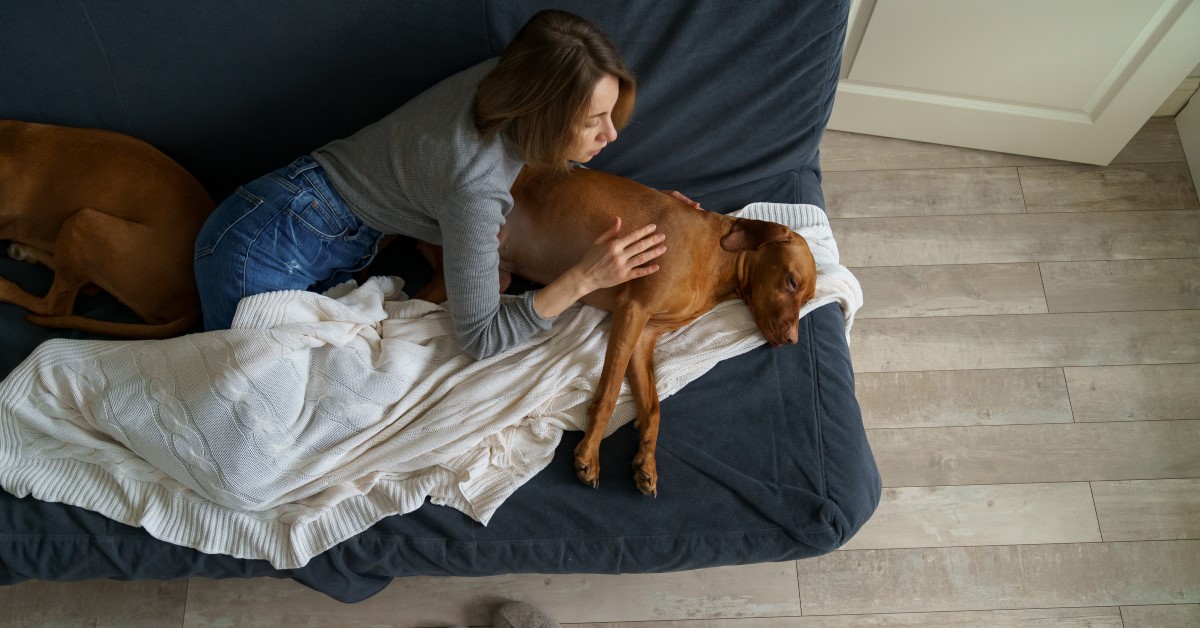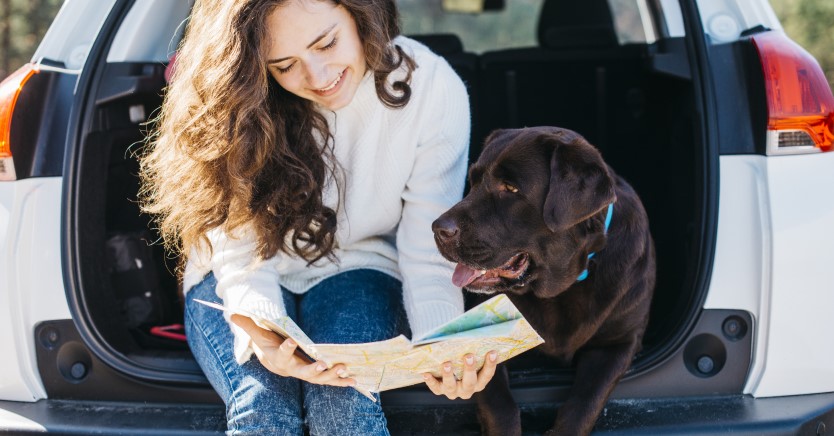Ask Dr. Jenn: My dog is throwing up and asking to use the bathroom often. Should I take her to the vet?
My family fed my dog some people food over the holidays, and now she has diarrhea. My vet is closed. Can I give her anything at home?

We in the veterinary field like to call this “dietary indiscretion.” Veterinarians see a lot of dogs with dietary indiscretion, but it tends to happen more around holidays. People like to make their pets feel included in the holiday celebrations by sharing part of the special meal. Or they allow their pets to over-indulge in treats. Or sometimes, in all the chaos, the dog gets into the garbage can and helps himself to the Christmas ham bone. What follows is no fun for anyone – vomiting, diarrhea, flatulence, etc.
First, it is important to know when to seek medical attention versus when to treat at home. Even if your vet is closed, most areas have either a veterinary emergency clinic or a veterinarian on-call. If your dog continues to vomit on an empty stomach, if she is very lethargic, or if there is a large amount of blood in her vomit or diarrhea, please consult a veterinarian right away. If she vomited once or twice, asked to go out frequently, or has some soft stool but is otherwise her usual happy self, you can try a few things at home.
If your dog is vomiting, withhold food and water for four hours. This will give the stomach a chance to rest and recover. After four hours, offer a small amount of water. If she holds this down, continue to offer water every hour for the next two to four hours. If she is doing fine with water, you can introduce food. I recommend a very small amount of a bland diet (more about the bland diet later). Feed her a small amount every one to two hours. If she throws up food, take away the food and water again for another few hours. If she vomits every time she eats or drinks for more than 24 hours, consult your veterinarian.
Maybe your dog spared you from having to clean up partially digested mystery meat from the carpet, but she has the trots and needs to go out every thirty minutes. Once again, a bland diet is your friend. Feed small, frequent meals of a bland diet for the next two to three days. Instead of feeding two large meals, feed four to six smaller meals throughout the day. Avoid any treats or fatty foods.
I keep telling you to feed a bland diet. But what exactly is a bland diet? A bland diet is a highly digestible diet that is usually low in fiber and fat. The highly digestible ingredients give the GI tract a chance to recover. Less fat means the body doesn’t have to work as hard to break down the food and less fiber means less bulk. When explaining the purpose of a bland diet to my clients, I compare it to when we are recovering from the stomach flu. We aren’t going to order a pizza. Instead, we usually eat chicken noodle soup, crackers, and maybe lightly buttered toast.
To make a bland diet at home, you want to use a low-fat protein source and a low fiber carbohydrate source, mixed 50:50. Examples of low-fat protein sources include chicken breasts, boiled low-fat hamburgers, or ground turkey. The meat can be cooked by boiling it to remove all fat. Chicken breasts can also be microwaved. Hard-boiled eggs or low-fat cottage cheese can also be used as protein sources. Good carbohydrate sources include white rice, noodles, sweet potatoes, or white bread.
Homemade bland diets should not be fed long-term as they are not balanced and lack essential nutrients for your dog. If you need to feed a bland diet for more than a few days, talk to your veterinarian about prescription diets, such as Hill’s i/d or Purina EN.
Probiotics and prebiotics are also beneficial when your dog has dietary indiscretion. When your pet eats something her GI tract isn’t used to, it can disrupt the balance of bacteria. The “bad bacteria” can overgrow, causing inflammation, releasing toxins, and worsening diarrhea. Prebiotics creates an environment for healthy bacteria to grow, and probiotics replace good bacteria. There are many commercially available prebiotics and probiotics available over the counter, just make sure that they are animal-specific. Probiotics for people are not as effective in our four-legged friends.
Beyond a bland diet and probiotics, I do not recommend any other at-home treatments for your dog. Over-the-counter anti-diarrheal medications for people are absorbed differently in dogs and cats and should not be used without the guidance of your veterinarian.
Ready to start saving money on pet wellness care?
Then take a look at Mint Wellness, the pet wellness plan that provides fast reimbursement on routine pet care. Save on vaccinations, wellness exams, preventatives, dental, and more!
Learn More


